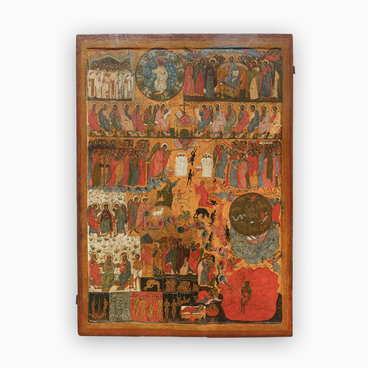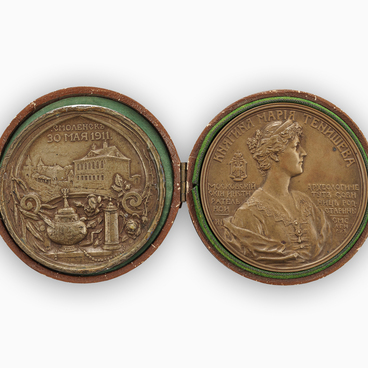The Great Martyr George was the son of rich and pious parents who raised him in the Christian faith. According to some sources, he was born in Palestine at the foot of the Lebanese Mountains, according to others — in Lydda.
George was noted by the emperor as a brave and promising warrior, known for his intelligence, physical strength, valor and beauty. George could have risen to positions of great power, but he chose another path. After hearing the verdict on the prosecution of Christians in court, he was filled with compassion for those who were persecuted. Anticipating that he too would suffer martyrdom, George gave all his possessions to the poor and freed his slaves. He then went before Emperor Diocletian and declared himself a Christian, accusing the emperor of cruelty and injustice towards Christians. For his stance against the persecution, St. George was arrested, imprisoned and tortured.
In icons, Saint George is often depicted seated on a white horse and slaying a serpent with his spear. Such images are traditional and allude to the posthumous miracles of Saint George. According to legend, near the place of Saint George’s birth, a serpent was said to dwell in a lake, preying on people. Superstitious locals began offering a young boy or girl to the creature as a sacrifice in order to appease its wrath. One day, the choice fell on the daughter of the ruler. She was brought to the lake, and when the serpent approached her, Saint George magically appeared on a white horse and killed the beast. Thus, he halted the slaughter of young boys and girls, and converted the pagans who had previously worshiped the serpent to Christianity.
This legend laid the foundation of the iconography of St. George. The first icons dedicated to this subject appeared in the 12th century.
The icon presented in the Russian Heritage Museum depicts St. George in armor on a white horse and with a spear in his hand — as a courageous warrior and righteous man. An angel with a crown is depicted above George’s head. The tsar and his wife, as well as the boyars and residents of the city, watch what is happening from the tower.
In Christianity, the “Miracle of St George and the
Serpent” also has an allegorical interpretation: the princess symbolizes the
church, and the serpent represents paganism; thus George, killing the serpent,
saves the Christian church from pagans.


